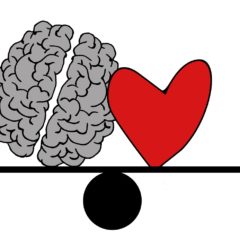It is very hard to teach or create an equitable culture of learning when a teacher is faced with students that have various behavior and emotional needs. Although I have been in education for over a decade I am only a second-year teacher. The many roles I held allowed me to witness many different management styles towards these student needs. Because of this my students have had opportunities not to just grow educationally, but emotionally and behaviorally.
It is now common to have a classroom with not just one but many students who disrupt the learning environment. At times it feels unfair that many students can’t just learn because the teacher needs to focus on recorrecting behavior. The environment for learning has become compromised and all students are losing.
All teachers begin the year by addressing tier 1 intervention practices. This would include discussing classroom expectations, routines, and appropriate behaviors. However, in order to reach students, educators must consistently reflect on these practices in order to maintain realistic expectations that are equitable for all students.
Tiered interventions should be flexible and ever-changing as the student begins to self-regulate. An educator’s key objective is to understand the student’s unique needs as the base of tiered interventions. A tier 1 intervention that has worked in my classroom is the 5-minute brain break.
My students and I discuss how much time they feel they can devote 100% focus. This will depend on the age group. I have discovered that most students agree to 20 minutes of focus time split up by 5-minute brain breaks. During the brain breaks, they are able to decompress and relax. Some students see it has time to talk with friends, other students draw, the studious students organize their belongings in preparations for their next subject, while others just lay their heads down and close their eyes. It gives me the opportunity to witness their behavior and understand their individual needs.
I alert students when one-minute is left in the break. I have an audible timer that alerts the students when the break is over. Students know that they must begin to walk back to their seats. I respectfully count down from five and when I say one all students must be in their seats and ready to learn. As a class, we discussed what this should look like and consequences that would be incurred if they are not ready for the next 20-minute session.
This tiered 1 intervention has proven to work with over 90% of the class. The students create rules that all follow and agree to when they are not in compliance with the 100% focus expectation. I have a class that would prefer that I give the students a warning if I observe a student not complying. They requested that I just remind the students about the purpose of the 20-minute break. “Students please be mindful in order to receive a 5-minute brain break I need 100% focus from all students.” Students have agreed that this is a warning and it also allows the student who isn’t complying to adjust their behavior without being singled out.
If this were to continue, my next agreed-upon step is to limit the break by 1 minute. However, students do want the flexibility to earn back their lost minute. They have grace implemented in their learning. Since the implementation of this tier 1 intervention student productivity and assessment data has greatly improved. It is also great to feel that students and I are focusing on the same goals, the success of their individual educational growth.
Other classes have different needs and expectations around the tier 1 brain break intervention. One particular class has many students who have difficulties regulating their behavior in the same time frame. This class has decided to receive the same warning as the class above, however they have agreed that if a particular student continues to not do their part they are to be moved up front by the teacher. In a respectful manner, I say, “Student A, please move upfront. Once I feel you have reached 100% focus I will let you know when to return to your seat.”
All students have agreed that they will do so if requested without any further disruption to the lesson. They understand that this isn’t punitive and know that I am only wanting the best for their educational improvement. The success of this tier 1 intervention continues to amaze me on the ability to support students continued successful learning.
The two classes mentioned above are proof that all interventions are not equal. The key is to allow student voices to be involved in the process. It is also very important to identify which practices work for all students and when reasonable adjustments must be made when some students are in need of more support. The end result is an equitable classroom where all voices are heard, respected, and learning occurs.
Below are fantastic sites that provide tier 1 intervention resources.

I love what you said about teachers having to reflect on their practices. It seems to me that so many people try to stick the the “tried and true” method rather than taking a risk and growing in their practice. Our students are always changing and so should we. That is, if we want to best serve them.
This is great, and necessary. I use brain breaks (tech breaks) in my high school classes…largely because each class is 100 minutes long. I am a full grown human and there are few situations where I can maintain complete focus and engagement for 100 minutes.
When I give periods of independent work, I also encourage students to plan for and manage their own tech/brain breaks, as this is a skill that I think isn’t intuitive and must be taught, modeled, and practiced.